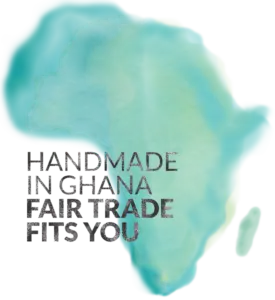BATIK | BATIK PROCESS | ORGANIC COTTON | AFRICAN BATIK HISTORY

History of Batik
The story goes the Belanda Hitam, Malay for “Black Dutchman”, brought batik to West Africa in the mid-nineteenth century after serving as indentured soldiers for the Dutch in Indonesia. Returning home from 15-year conscriptions, legend says the men brought back trunks of fine Javanese batik, covered in opulent whisper-thin patterns that captured the imagination of their friends and relatives. It’s a neat story, but unfortunately, as any scholar will tell you, textile history is one sticky wicket. Of the 3,080 recruits from 1831-1872, only a handful returned to West Africa , and those that did make it back usually returned empty-handed; the recruits were not paid until they reached their final port, which would have made souvenir shopping pretty difficult.
Batik is older than history, with traces even laced in the wrappings of Egyptian mummies. Most people think of South East Asia when they hear batik, and indeed the word derives from several Malay words, but nations as diverse as Japan and India have had their own versions of the tradition. Batiks were as good as gold for much of history, and were enthusiastically traded among Asian neighbors as early as the seventh century. Europeans entered the mix much later, but they became the major pushers of “woven cargoes” from the seventeenth century on, and some colonial powers, most notably the Dutch (during their Golden Age), had a heavy hand in industrializing the technique.
Batik in West Africa
Of course, this doesn’t quite explain how, or when, batik arrived in Africa. Dutch Scholar Ineke van Kessel suggests the fabrics came from India to West Africa by land, not sea, over the ancient trans-Saharan routes. Local populations like the Yoruba in Nigeria incorporated aspects of the wax printing into their tradition textiles, and little by little the trend caught on. When the Dutch and English began trolling the coast of West Africa in the seventeenth century, they brought their wax (wax batiks) and non-wax (roller print) fabrics, targeting a local population already poised for their consumption. In time, European textile designers began developing prints targeting their African market, tweaking designs down to each region and port.
Batik, in its original handcrafted form, and its derivative roller print (often confusingly called real Dutch wax print) are ubiquitous and highly cherished across West Africa today. Prints range from abstract geometry to figurative images, and beyond. For many men and women, the patterns are a form of expression and even communication, announcing everything from their marital status and mood, to their political and religious beliefs. Up until the 1960s most wax prints were still produced in Europe, but in the post-colonial era, that all changed. Ghana boasts three of the finest wax print manufacturers in Africa: Woodin, GTP (sister of Vlisco in Holland), and ATL (sister of ABC textiles in Manchester). Unfortunately, legal and illegal Chinese and Nigerian copies have flooded the markets of late, and many, especially GTP, have seriously suffered.
Batik at Global Mamas
Global Mamas carries on the long tradition of handcrafted batik, and in many ways, our hybrid design philosophy is apropos to batik’s complicated history. Global Mamas volunteers and design team bring forward inspiration and ideas from the international market while expert batikers bring forth their own creativity and inspiration from local markets with our annual design competition. The resulting textiles are timeless and multi-national, incorporating ideas and styles from Java all the way to Jersey.
Visitors to the Cape Coast/Elmina area of Ghana should check out The Elmina Java Museum, a petite but wonderfully curated look at the history of the Black Dutchman, many of whom came from Elmina.
Written by Genny Cortinovis for Global Mamas
Further reading on the history of African batik:
- Daniel J. Crowley, “African Crafts as Communication,” African Arts, Vol. 14, No. 2 (Feb., 1981), pp. 66-68+70-71
- Inger McCabe Elliott, Batik, fabled cloth of Java, New York: C.N. Potter: Distributed by Crown, c1984.
- Fiona Kerlogue, Batik: design, style & history, London; New York: Thames & Hudson, 2004.
- Christopher B. Steiner, “Another Image of Africa: Toward an Ethnohistory of European Cloth Marketed in West Africa, 1873-1960,” Ethnohistory, Vol. 32, No. 2 (Spring, 1985), pp. 91-110.
- Peter Quartey, “The Textiles and Clothing Industry in Ghana,” The Future of the Textile and Clothing Industry in Sub-Saharan Africa, Bonn: Friedrich-Ebert-Stiftung, 2006. http://library.fes.de/pdf-files/iez/03796/10ghana.pdf
- Arthur Japin, The Two Hearts of Kwasi Boachi, New York: Vintage Books, reprint, 2002.




